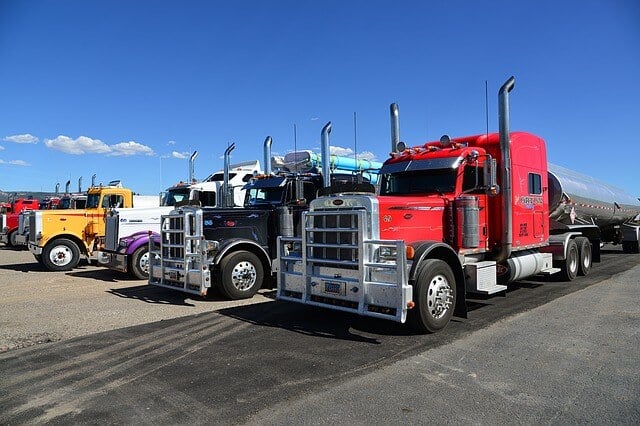Fleet Management Best Practices: Vehicle Acquisition and Disposal

By Steve Saltzgiver, Fleet Success Ambassador
What are the secrets behind being a great fleet management organization? Like any other vocation, it does not happen by accident. There is a science behind becoming an efficient and effective fleet management organization. As a fleet manager and fleet industry consultant, I’ve employed — and seen employed by others — over 100 known fleet management best practices.
During the past few years, I’ve had the opportunity to teach many of these best practices to others in the fleet industry. During my tenure as a fleet management consultant,[1] we developed a best practice matrix that we shared with our clients as a starting point to define each best practice engagement.
These fleet management best practices began with the acquisition of assets and disposal along with associated activities involved. Likewise, below is a list of these best practices that the RTA Fleet Management consultant team utilizes to aid clients.
VEHICLE ACQUISITION
Vehicle Specifications Development
Prior to any asset acquisition, each fleet management organization must engage in a formal process to better understand how the assets will meet user demands and accomplish its intended mission. The general activities involved in the asset acquisition process involve:
- Meeting with asset users to better understand its intended mission/use,
- Gathering specifications from select (competing) suppliers to see what they offer,
- Conducting individual supplier asset demonstrations (i.e., ride and drive),
- Assembling a list of detailed specifications to conduct a competitive bid,
- Evaluating supplier’s competitive and detailed bid specifications offered,
- Selecting the best supplier/partner based on important considerations such as:
- Adherence to preferred asset specifications outlined in the bid,
- Supplier longevity and industry reputation and presence,
- Initial purchase price and total cost of ownership (TCO),
- Asset trade-in and buy-back opportunities,
- Timely supplier support, warranty, maintenance/repair access, and parts availability.
Vehicle Acceptance, Preparation, and Delivery
Prior to the formal acceptance of any asset from the supplier, each fleet management organization must have a formal set of detailed policies and procedures in place that outline specific processes to be followed by fleet and supplier employees. These processes may include:
- Ensure delivery timeframes were adhered to as negotiated in bid specifications,
- Upon transfer of title, conducting a line-by-line verification of successful supplier bid specifications delivered,
- Complete upfitting tasks, safety equipment installs, asset decaling, etc.,
- Complete asset licensing, registration, and insurance requirements and place in cab,
- Initiate asset birth certificate to enter asset demographic data (e.g., year, make, model, dept, fuel type, etc.) into the fleet management information system (FMIS) like RTA,
- Assign credit cards to access fuel, misc. supplies, and maintenance, if applicable,
- Conduct operator and maintenance personnel asset operation, maintenance and safety training provided by the supplier prior to deployment,
- Negotiate details and implement bilateral service level agreements (SLA) between the fleet organization with both the user and the supplier,
- And many more.
VEHICLE DISPOSAL
Vehicle Deaccessioning and Disposal
Once the asset has completed its assigned life cycle, each fleet management organization must conduct a set of formal activities outlined in their vehicle acquisition and disposal policies to deaccession the asset prior to disposal. These activities generally include such things as:
- Removing insurance cards, fuel cards, asset markings, logos, etc.,
- Removing equipment not for sale to the public (e.g., lightbars, sirens, etc.),
- Prepare and print out asset historical maintenance and repair files from FMIS,
- Performing a final safety inspection prior to disposal scheduling,
- Archiving the asset data in the FMIS upon sale and disposal of asset.
VEHICLE PERFORMANCE MANAGEMENT
The final step involved in the vehicle acquisition and disposal process is vehicle performance management. These activities entail the final data analysis involving how the asset performed its specific mission intended for the user department. These post-disposal activities generally include the following activities:
- Use the FMIS data to analyze asset life cycles, cost, and performance to establish statistics to compare similar assets and adherence to expected TCO benchmarks,
- Conduct formal meetings (or surveys) with user department stakeholders showing them cost data to determine how the asset performed its mission and to solicit feedback for potential changes to future specifications,
- Meet with asset suppliers and discuss analytical data, SLA performance, and feedback from users relating to future asset specifications and performance criteria,
- Share final analytical, user, and supplier data with management to inform them of overall asset performance, cost-effectiveness, and overall mission performance along with recommendations.
SUMMARY
By utilizing these known best practices for vehicle (i.e., asset) acquisition and disposal, each organization ensures these processes operate smoothly, efficiently, and cost-effectively. The importance of asset acquisition and disposal cannot simply be overlooked or managed capriciously as these activities ensure the most optimal TCO for the organization.
Finally, we’re very interested in your feedback and questions pertaining to this blog, please let us know your thoughts at ssaltzgiver@rtafleet.com
Stay tuned!
In Part 2, we will discuss the importance of “Vehicle Operation and Management” best practices and how they can enhance your operations.
In the meantime, if you’d like to learn more about the RTA solution, contact our Sales team to schedule a demo!
[1] Mercury Associates Inc. (mercury-assoc.com) and RTA Fleet Management (www.rtafleet.com)
